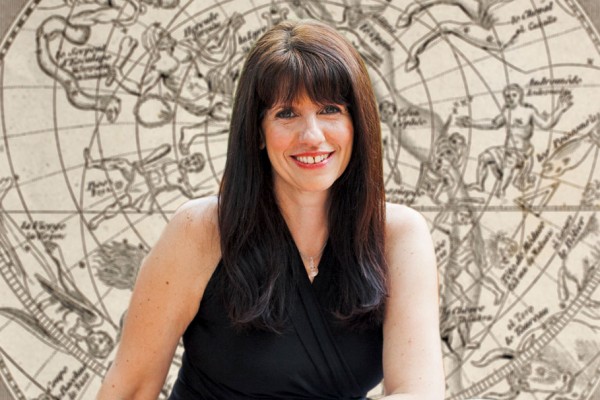Continued (page 14 of 14)
The Whale Filmmakers Suzanne Chisholm and Michael Parfit
The Whale tells the story of a two-year-old orca nicknamed Luna who becomes separated from his family and winds up in a place called Nootka Sound on the coast of British Columbia. The documentary was written and directed by Suzanne Chisholm and Michael Parfit and executive produced by Ryan Reynolds (who also narrates) and Scarlett Johansson. We aren’t going to give away the details of this touching film, but we guarantee it’s one of the movies everyone will be talking about. Suzanne and Michael spoke to us about a film that has been in the works since 2004.
Sedona Monthly: Starting the film with the analogy of a child lost in a supermarket draws the viewer in instantly because it’s something we can all relate to. You have quite a few relatable analogies in the film – extraterrestrials, kids on the playground, etc. Can you talk about that?
Michael Parfit: I make those comparisons in my own mind just to understand the things I go through. This is such a stirring sequence of events to go through personally that I made those analogies in notes and diaries while it was happening. When it came time to try to have the story make sense for other people, I used what helped it make sense for me.
Suzanne Chisholm: Luna’s story is universal, and people around the world relate to the idea of getting lost and the need for other beings.
How did Ryan Reynolds and Scarlett Johansson become involved?
Parfit: We showed an early version of the film to a guy named Eric Desatnik. He showed it to Ryan. Ryan loved it. He grew up in Vancouver, so it was really in his backyard. He had seen orcas when he was a child. He showed it to Scarlett Johansson, and she loved it, so they came on board as executive producers, and Ryan did the narration.
Can you talk to us about the timeframe of the film? You mention dates, but never years. How long were you actually covering the story in Canada?
Parfit: The story runs from 2001 to 2006. We don’t include the dates because we hope people are going to be watching the movie for years. We got involved right at the beginning of 2004. We’ve been almost working on this film full time every since. We didn’t know we were making a film until almost a year and a half into the whole process.
How did you become involved?
Parfit: I’ve done a lot of writing for National Geographic and the Smithsonian magazine. We were living not far from Luna, and the Smithsonian asked what was interesting in our part of the world. We told them about the little whale. We hadn’t met him yet, but it was an interesting story, so the Smithsonian sent us to cover it for a short magazine article. We thought we would spend three weeks or a month, and we wound up spending years. We were about a five-hour drive from home.
Chisholm: Michael and I had worked together for a long time, and we had done documentary films for the National Geographic Channel. We had a background in filmmaking. It’s the kind of story that when you describe it verbally or even in the written word, it doesn’t have the same impact as it does visually. It’s such a visual story.
How have your careers changed since you made the film?
Chisholm: We never expected to have a documentary on the big screen in the U.S. and Canada. It’s been very exciting. We joke that we’ve been getting a Ph.D. in filmmaking because we’ve learned so much.
Parfit: It’s about as expensive as getting a Ph.D. [laughs]. It’s more than just changed our career. Getting to meet and know Luna really changed our lives. The way we look at life in general has changed in ways we don’t really understand yet. It’s been a universal change across everything we do and think about.
Have you made any films since The Whale?
Parfit: We’ve been working on this the entire time. We’ve taken advantage of the technology to rework the film and make it different and respond to people’s comments. There was an earlier version called Saving Luna, but it’s a very different film now, in part because Ryan Reynolds was involved. That changed the entire structure of the film to some degree. Our perceptions of the story itself have evolved since we’ve searched for the meaning of the story.
When was the film first screened?
Parfit: The Whale premiered on the big screen [last] August. We showed it for the first time in the Faroe Islands, which is a whaling nation. We were invited by people who believe the Faroe’s should move on from killing whales. It was very well-received there. It’s the last place you’d think of to take a movie for a premier, but it was very rewarding. People who have been killing whales for years are rethinking what they’ve been doing, and the film contributed to that. The old version was in film festivals in 2007 and 2008.
Chisholm: We opened theatrically in New York and L.A. [last September]. Saving Luna won 25 awards from film festivals around the world.
When you look back on the experience, does the solution to Luna’s predicament seem obvious?
Parfit: We turned 180 degrees in getting to know Luna and the situation. We didn’t feel the same way in the beginning.
Luna’s situation also seems like a metaphor for other things going on in the world.
Parfit: I think that’s what the film does to some degree. It allows us to think about other issues we’re facing. These relationships we have with each other and with other lives and cultures and species – the links we forge are not just warm and fuzzy things. These links between individuals came to us through evolution, which means they are absolutely necessary to our survival. Our society seems to be more focused on the disconnect rather than the connections. While getting to know Luna, every day it was startling to see a whale with the need for connection similar to human beings.
After making this film, what are your feelings toward the Canadian government?
Chisholm: It’s interesting. I’m Canadian, and to be honest, we were appalled at the time with the decisions made. Having said that, we met a lot of really good, kind, smart people in the government. I don’t have negative personal feelings toward any of them. The structure of our government is that they have to look at the rule books, and Luna fell way outside anything they were prepared for. They didn’t have the institutional mechanisms to deal with a case like Luna.
Parfit: As a result of Luna’s experience and the experience of other solitary whales and dolphins, there are some scientists who are looking at establishing a system for meeting with these animals when they do get separated and start to interact with people and trying to give them what they need without harm. That’s a very positive development that will be reflected in government policy.
MORE SEDONA INTERNATIONAL FILM FESTIVAL: 2014, 2013, 2011, 2010, 2009, 2008, 2007, 2006, 2005, 2004
Want more movie history? Go to www.arizonaslittlehollywood.com



